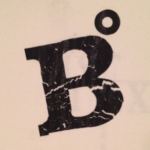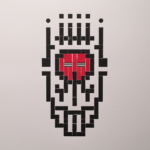Mitch Goldstein
Assistant Professor
School of Design
Rochester Institute of Technology
As the bar for entry to art and design becomes lower, it is easier than ever for anyone to call themselves a “creative.” One way to separate ourselves from the dilettantes is by creating a sense of agency as makers and thinkers — understanding who we are, how and why we act within our chosen fields, and what our criticisms of art and design are. Art and design school is an intense experience, where students are exposed to dramatic shifts in social, environmental, and intellectual contexts. Educators must help our students navigate these new realities, while also assisting in their development into future artists and designers. We must educate our students to move past trends and superficial technical acumen, into a more inquisitive, exploratory, and critical approach to creative practice. Developing agency informs how a student can approach creative inquiry, and how they can process and manifest work within their creative practice. This presentation will examine projects, outcomes, and critical frameworks used to teach agency.
This research was presented at the Design Incubation Colloquium 3.0: Massachusetts College of Liberal Arts (MCLA) on Saturday, Sept 24, 2016.


